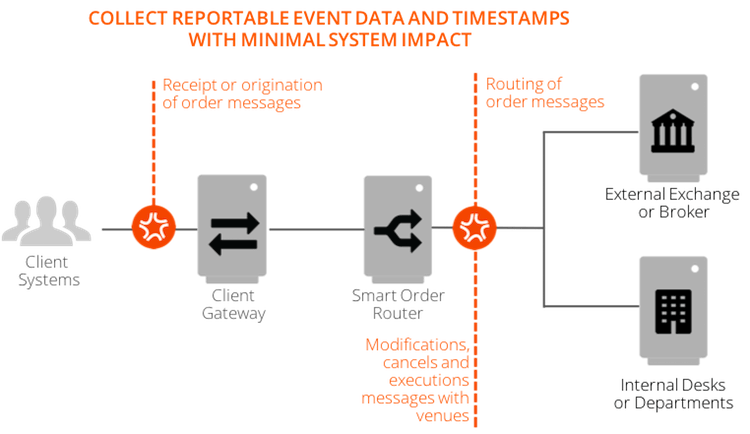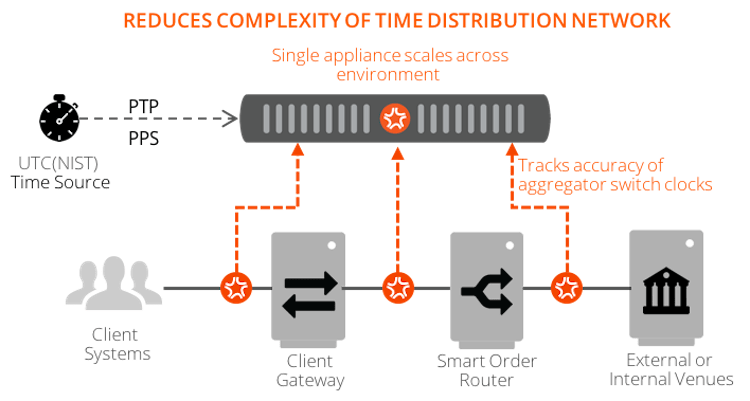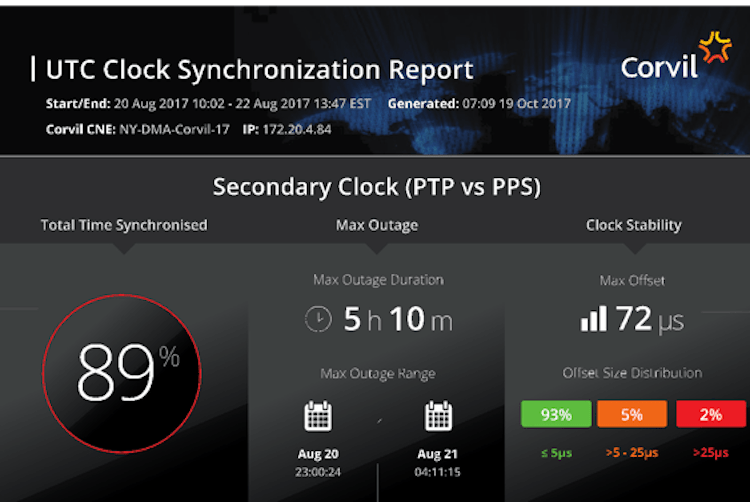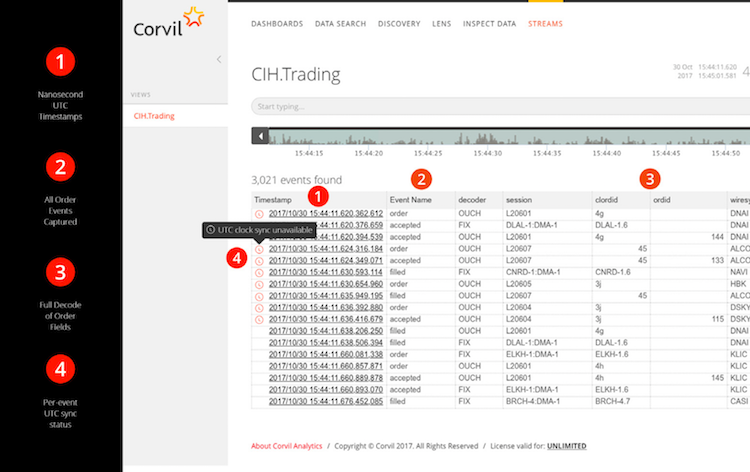Consolidated Audit Trail (CAT)
Making Compliance Simpler, Faster, Cheaper
The SEC has mandated greater precision by which time and events are captured within trading networks with the adoption of both Rule 613 and the subsequent Consolidated Audit Trail (CAT) National Market System (NMS) Plan. Trading venues and market participants also require a system of verification of clock synchronization integrity (that is traceability to NIST) to meet regulators oversight and auditability requirements.
Problem Overview
Current IT systems and processes that underpin many US trading businesses are unprepared for capturing electronic order event data with millisecond timestamp granularity or the clock synchronization tolerances stipulated by the SEC. Some proposed solutions for meeting the requirements would necessitate costly and time-intensive server and network hardware and software upgrades.
Additionally, the SEC has also mandated greater precision, oversight, and auditability of clock synchronization to ensure the accuracy of those trading event timestamps. As a result, operational monitoring and compliance assurance processes must adapt to the new requirement that firms “adopt policies and procedures to verify such required synchronization each Trading Day (1) before the market opens and (2) periodically throughout the Trading Day.” As such, it is critical to establish independent and continuous visibility, analysis and insight for business, technology and compliance teams.
Solution Overview
Corvil simplifies data collection and timestamping for events within an order’s lifecycle that must be reported to the Consolidated Audit Trail (CAT). The Corvil platform is deployed non-intrusively as an overlay on existing infrastructure, seeing all trading activity without requiring configuration for systems or flows to opt in. This removes the need for trading venues and participants to overhaul internal IT systems.
Corvil's NIST Traceability Solution delivers an independent, continuous assessment and record of clock synchronization integrity. Real-time monitoring enables rapid response to issues or outages by alerting operations team to any loss or disruption of clock synchronization. Order messages whose timestamp accuracy may be suspect are automatically identified, providing customers with a record of affected transactions for closer examination, auditability, risk mitigation, and regulatory reporting purposes. Automatically generated reports save time and reduce risk associated with compliance.
Outcomes
- Lowers regulatory tail-risk to the business from non-compliance
- Minimizes trading systems changes to capture order data with precision timestamps
- Simplifies independent, continuous assessment of synchronization integrity
- Reduces implementation complexity and costs
- Future-proofed against more stringent rules
"You can sleep much better at night knowing you have an independent watchdog system that sees everything. The scary situations are the events no one has imagined, and Corvil helps protect us from those."
MD GLOBAL INVESTMENT BANK
Corvil simplifies data collection and timestamping for events within an order’s lifecycle that must be reported to the CAT. Nanosecond precision addresses current and future tightening of compliance requirements.
Corvil’s machine-time analytics platform is already widely used and trusted across the largest venues and market participants.

Because Corvil gathers reportable event data non-intrusively, it minimizes the need to retrofit trading systems to meet regulatory demands.
An investment firm reduced risk and accelerated their compliance timeline by three months by deploying Corvil to replace bespoke and manual processes dependent on system logging for UTC traceability.

Corvil delivers an independent, continuous assessment and record of clock synchronization integrity compared to the NIST reference.
Business, technology, and compliance teams obtain precise visibility, quantitative analysis, and insights that can demonstrate active, responsible oversight and auditability to internal or external authorities.

Real-time monitoring enables rapid response to issues or outages by alerting operations team to any loss or disruption of clock synchronization.
Order messages whose timestamp accuracy may be suspect are automatically identified, providing customers with a record of affected transactions for closer examination, auditability, risk mitigation, and regulatory reporting purposes.
